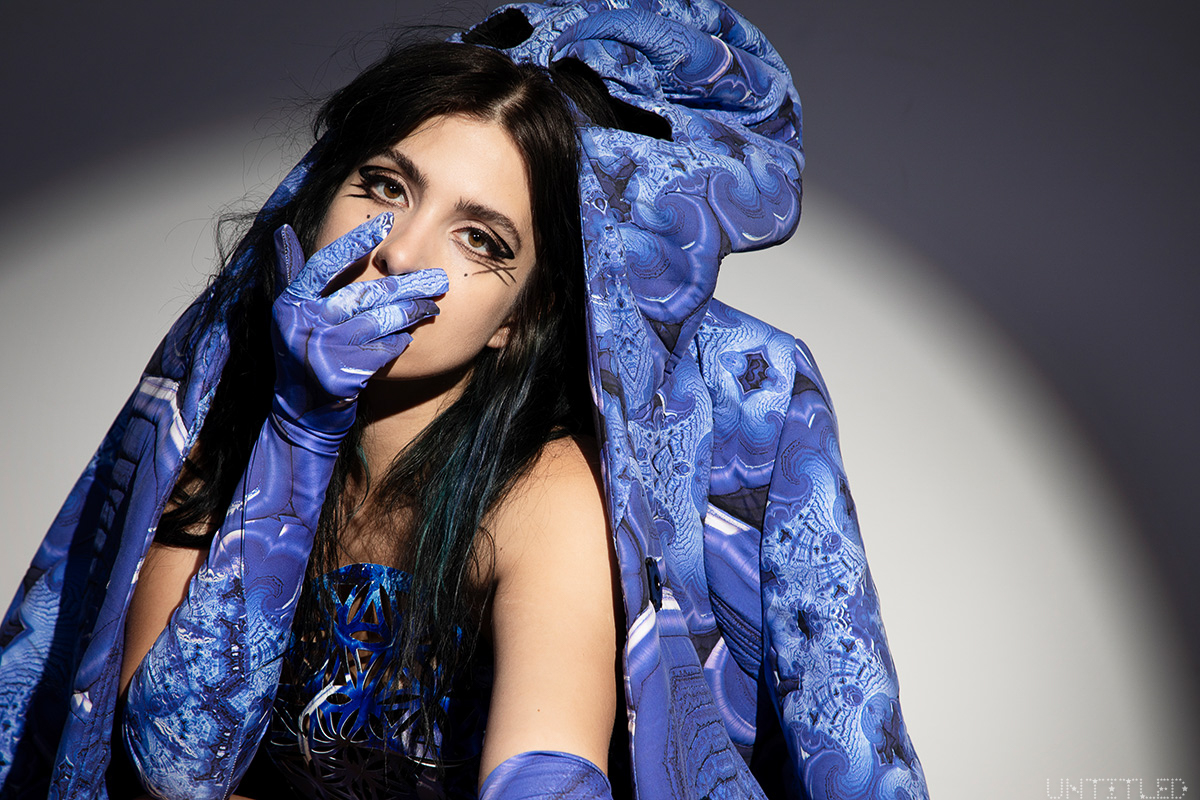
Art collective, performance artists, girl group, punk band, anarchists… Pussy Riot has been labeled many different ways over the years, although few truly grasp the full scope of what they are about and many have perhaps underestimated their brilliance. Originally a roughly dozen-member Russian feminist collective, Pussy Riot is now a fully-fledged protest movement and DAO (decentralized autonomous organization), with hundreds of people identifying as part of the community standing for “gender fluidity, inclusivity, matriarchy, love, laughter, decentralization, anarchy, and anti-authoritarianism.”
The group cemented themselves in the global activist space in 2012 when co-founder Nadya Tolokonnikova, amongst other members were jailed for two years for conducting an anti-Vladimir Putin performance inside a Russian church. Despite being tortured while in prison with forced work labor, sleep deprivation, brutal physical and mental abuse, Tolokonnikova continued her artistic activity including touring Siberian labor camps with her punk bank. After having served 21 months of their sentence, Tolokonnikova and Pussy Riot member Maria Alyokhina were released from prison after an amnesty bill was approved. Post prison, she continued to amp up her activism by co-founding an independent news service media outlet, Mediazona, speaking before the US Congress, British Parliament, and European Parliament. She published her book “Read and riot: Pussy Riot’s guide to activism“ as well as collaborated with notable artists such as Banksy.
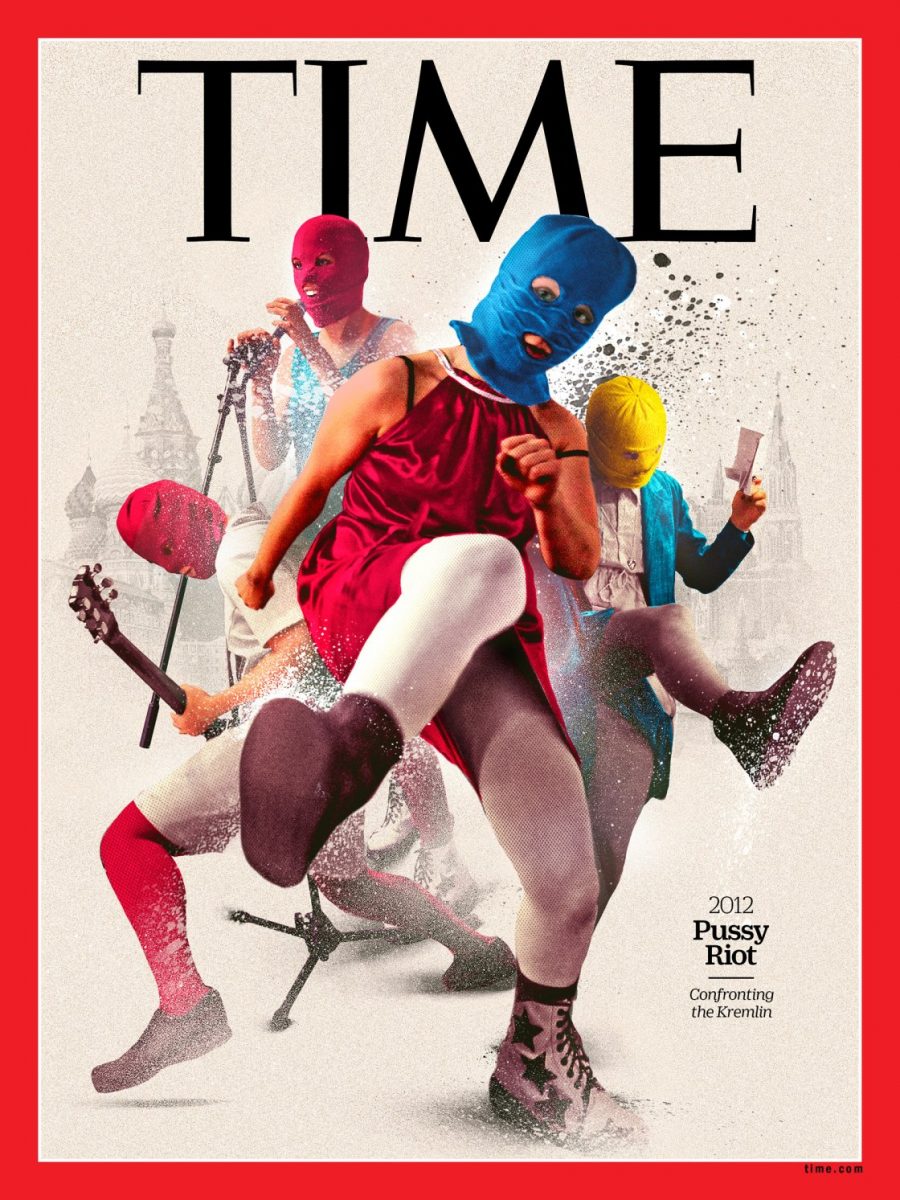
Now, 10 years later, Nadya has exponentially increased the activist output of Pussy Riot, from music and protests to humanitarian aid, all while being officially designated a foreign agent by Putin. Tolokonnikova, who continues to suffer from severe PTSD from her time behind bars, acknowledges how her imprisonment was instrumental to Pussy Riot and the larger movement it stands for. Most recently, Nadya has spearheaded Pussy Riot into the realm of crypto, raising funds for humanitarian aid through the NFT space. In addition to dropping her first NFT artworks in 2021, the proceeds of which went to shelters for victims of domestic violence in Russia, Nadya was also a founder of UkraineDAO, which racked in $7 million in crypto in just a few days from a single NFT drop-off the Ukrainian flag. The proceeds, donated to the “Come Back Alive” fund, went towards much-needed humanitarian aid in Ukraine.
Alongside new music and touring, Nadya is now working on launching her newest crypto-venture, UnicornDAO, which is focused on redistributing wealth, power, and visibility in the art world, with a particular emphasis on inclusivity for women and the LGBTQ+ community. According to reports in 2021, only 5% of NFT sales were by female-identified artists. Co-founded by Tolokonnikova, John Caldwell (Wave Financial) and Rebecca Lamis (Quantum), along with her network of “Crypto OGs, artists, builders, and allies,” UnicornDAO is using “economic tools as paints and brushes” to change the landscape of Web3 from male domination. So far the collective has raised more than $4.5 million to support women-identified and LGBTQ+ artists, with support from Bored Apes Yacht Club, MoonPay, World of Women, Tribute Labs, Beeple, Sia, and many more. Musician Grimes announced this week that she joined the board of the feminist collective and donated an art piece. UnicornDAO has also announced they will be hosting an in-person launch event on June 21st at NFT.NYC, as well as several other platforms including UnicornRiot which will focus on reproductive justice in the US.
The Untitled Magazine’s Indira Cesarine sat down with Pussy Riot’s founder Nadya Tolokonnikova to talk all things Pussy Riot and the launch of UnicornDOA, as well as her efforts to bring crypto into the activist space. Read on for the full interview below and a preview of our photoshoot, more of which will launch in our next collector’s issue.
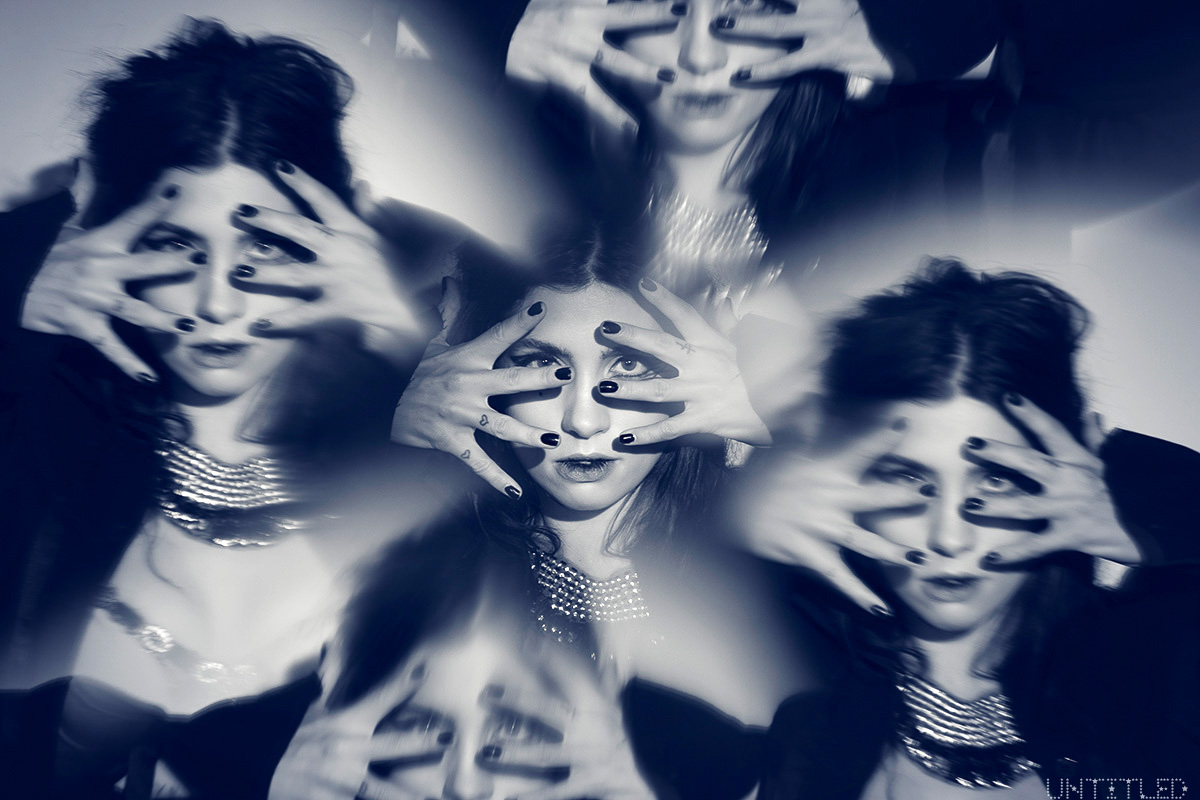
Indira Cesarine: I would love to talk to you first of all about the inspiration behind Pussy Riot – which has been going now for over 10 years. Can you explain what the movement means to you and how it has evolved and expanded since it was formed?
Nadya Tolokonnikova: Pussy Riot is one of the first DAOs because we’re decentralized and autonomous and flat when it comes to structure. I’m the founder, but I don’t get to decide where it goes because everyone and anyone who is part of Pussy Riot who decides that they share the same values and aesthetics at some point can join. It is actually an open-source, open-entrance movement, and there is beauty in that. It especially makes sense for operating in a country like Russia, where some of us can be put in jail, some of us can be murdered. A lot of “wonderful” things can happen, but no, it doesn’t mean that the movement is going to stop.
That was important from early on because we knew that it was likely that something could happen with this. So it actually did work out really well. When we ended up in jail in 2012, a big international Pussy Riot movement picked up. And now when I travel, I see people who identify as Pussy Riot in all parts of the world, and I do not know most of them and I don’t have to know them. They can just operate on their own and do their own actions and performances and whatever they want. I am one of the core drivers of Pussy Riot, I would say, but my authority is just based just on respect for my expertise and experience from other members; and weirdly enough, we didn’t have any big clashes between our members, so it’s actually running really smoothly. People usually have distrust for these kinds of organizations that are non-structured in the traditional hierarchical sense… I’ve been enjoying the ride a lot.
I know that you don’t like Pussy Riot being called a “band,” it’s an art collective and a protest movement. But now it’s, as you refer to it, a “DAO,” which is something that people are right now just trying to understand as the entire NFT/crypto space is growing. Can you elaborate on Pussy Riot in terms of being a DOA?
Yeah, it’s really exciting to see, incredibly exciting. I would identify as an anarchist, and I’m a whore for efficiency. I like efficient structures. But in people’s minds, [a DAO] would not necessarily be something that can marry efficiency and decentralization. And I think that that’s one of the reasons why I’m still so excited about what’s in the works in the crypto space and DeFi and NFTs and Ethereum. The founder of Ethereum, he basically built in this structure of efficiency and decentralization, which obviously takes some fine-tuning – so sometimes one thing works sometimes others don’t – but it definitely allows for much bigger and scalable decentralization than before.
You consider Pussy Riot to now have hundreds, if not more, members. How do people become members of the Pussy Riot community?
They just identify with being a member. They don’t have to get an invite. It doesn’t work like Clubhouse where you have to be invited. They could be invited, but it’s not required.
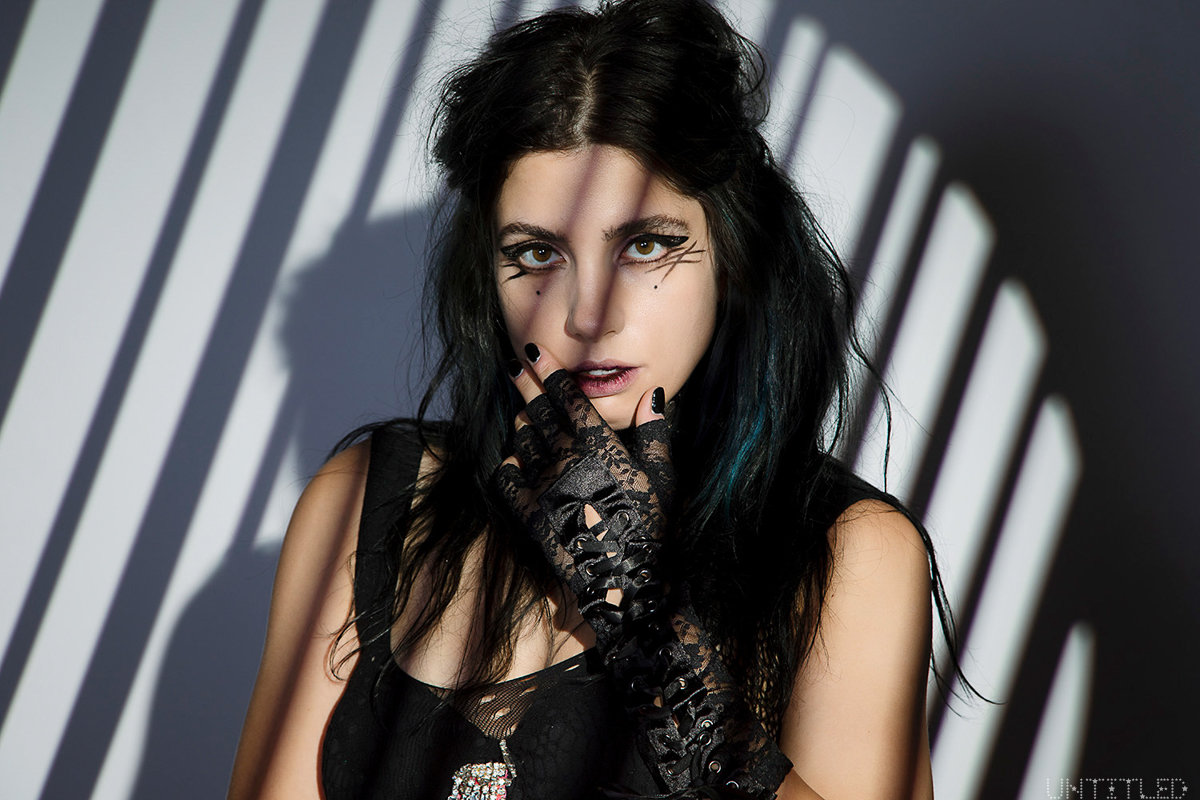
I think it’s very interesting, the way that you referred to your imprisonment previously. You referred to being in prison as almost something that was fortunate, or like a positive thing for the movement.
Yeah, [positive] for the movement, not for my mental health!
I’ve read about your harrowing experiences, the torture and forced labor you had in prison, and I think it’s impressive that you are so positive about the impact that it has had on the movement. Can you elaborate on your point of view on that?
Well, I think everything comes with a price, and if you want to participate in trying to remove one of the most powerful men from his office, then it’s likely you are going to be facing some sort of consequences. So it was something that we were prepared for, but we were definitely not looking for that. We were able to pay a certain price. If you read history, that’s how things are changed. There is not actually a really simple way – like if you could push a button on an iPhone and things magically change in the future. So far it’s always been through imprisonments, arrests, hunger strikes, rallying for days, and refusing to leave until what you want is being met.
Being a big fan of history I knew that something bad was going to go down. So I was somewhat prepared, but obviously, it’s one thing to be prepared and another thing to actually experience something. Those are two completely different things. Unfortunately, we cannot fully control our brain, and obviously my lizard brain was fucking terrified! I experienced a lot of panic attacks and damaged my mental health forever. I never fully recovered after [being imprisoned]. I still have a major depressive disorder and panic attacks that I deal with on pretty much a daily basis.
I guess the difference between a human being and a fly is that we can analyze things that we have done and things that we are going to be doing, and just see them on different levels. So from a personal level, it was really detrimental for my own health, but for the political movement that we started, it was quite instrumental. We were especially able to galvanize a lot of young people in Russia; lots of them came to their first protest, because of Pussy Riot. I’m still being approached by people who say “I came out of the closet because of you, thank you!” And that’s big. That’s something that helps me on a personal level dealing with my mental health problems.
Viktor Frankl in his famous book [Man’s Search for Meaning] about the meaning that human beings can find and help them to survive in the worst of circumstances wrote extensively about that. I refer to Viktor Frankl here saying that even if you’re personally damaged by something, there is a bigger sense that basically can save you and keep you on track. If it’s not positive, then it’s at least tame.

You’ve evolved a lot from your early work of in-person activations, and performances, and have been channeling a lot of your recent energy into the crypto and NFT space. Can you share your vision behind some of your early NFTs and how you got into NFT artwork?
It was February 2021, and I decided to try to sell one of my upcoming music videos. It was called “Panic Attack,” and it’s a piece on the interconnection between mental health and environmental issues, and how destroying the planet leads to a lot of personal mental health issues. And I decided to try this new NFT format. I wasn’t entirely sure how it was going to develop or evolve. I had a little bit of understanding of the landscape because I’m always trying to be at the intersection between tech and culture, and I have quite a few friends who came to the NFTs early. So they explained to me early what the technology is about and what it could bring us. So I made my first drop in the beginning of March [2021]. My first piece went for 178ETH, and that was the whole video of “Panic Attack.” It consists of four parts; the first part went for 100ETH.
It was an insane time for NFTs, and for me it was important to step into the game because I wanted to challenge the emerging NFT community and try to steer them a little bit towards activism. There were a lot of talks about the future, but the importance of community and giving back to the community, supporting each other. it felt quite utopian to me. But I wanted to deliver an actual activist experience because I had a lot of knowledge to offer. Often people don’t really know where to send money when they want to support someone. They don’t know how to research into those that they want to support.
I wanted to bring activist knowledge in ETH, and I made this first drop, and sent a bunch of money from the first drop to support shelters for victims of domestic violence in Russia. So that went well! Then after that, I just took time to learn and quietly sit and listen and talk to different people in the space and build my network of trusted individuals. I ended up building a network of really good OGs who are actively involved in thinking about building a better future – I’m not saying that everyone in crypto is like that, that’s far from truth, but a lot of people are. And this was later crystallized in UnicornDAO, which is first and foremost, a network of really powerful individuals – from activists from the creators’ side or from the collectors side, builders in this space, investors in this space – who created this organization in order to influence what NFTs are going to be a year or 10 years from now.
I’ve done a couple of other personal NFT drops last year, and they would always have an activist component. I helped families of political prisoners with my NFT drops, I supported Mediazona, which is an independent media outlet I founded in 2014 in Russia, and a number of others.
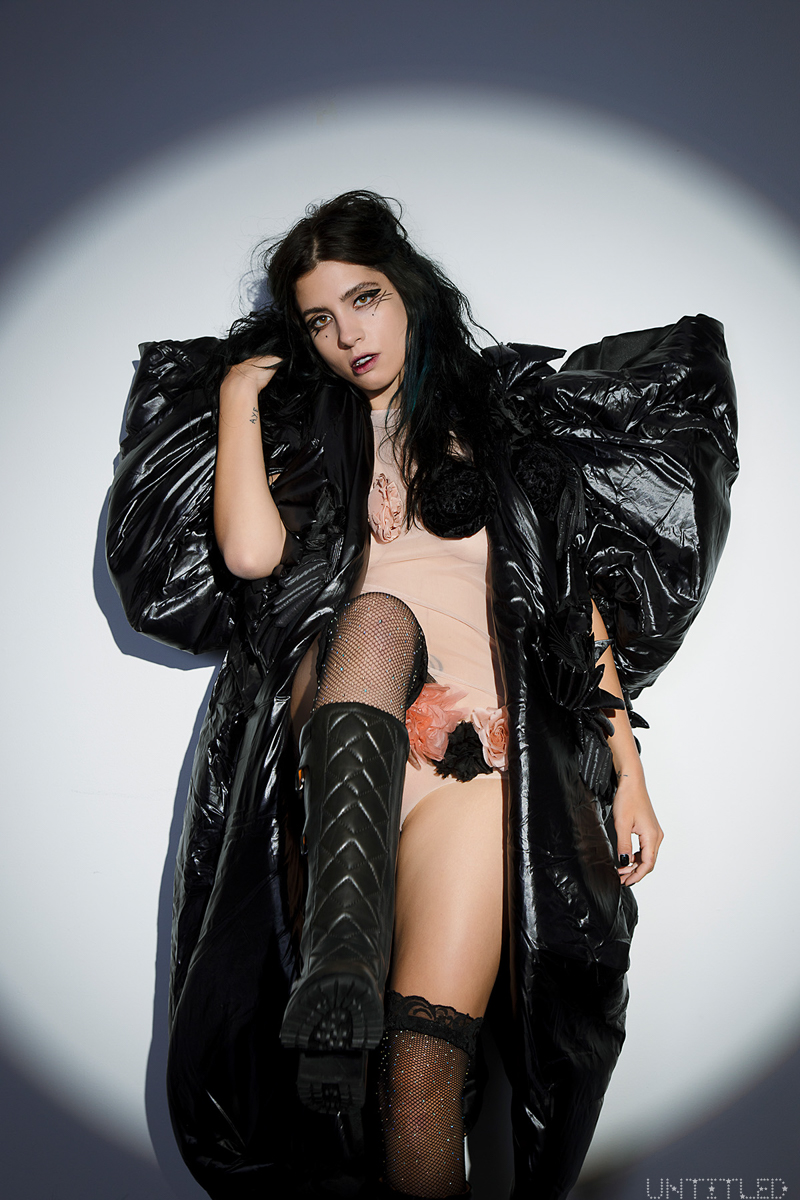
Back in February 2022, when we were on set shooting, you were incredibly busy working on the launch of UkraineDAO. It was a really intense day!
It was pure insanity. It was the busiest day of my life!
UkraineDAO raised over $7 million in 3 days for the “Come Back Alive” fund. It’s incredible how you’re using NFTs to fight Putin! Tell me about how you put together UkraineDAO and its ability to bring people together collectively to make a massive difference?
I remember having Vitalik Buterin, [co-founder of Ethereum], in the moment of raising the money or maybe right after, being actually really amazed by what UkraineDAO has done. It was an extreme honor to hear it from him because he constantly talks about the importance of using crypto for things other than just monetary use cases. He talks about how we can change the world using crypto for better governance, for more sophisticated voting on local issues, for really organizing on a global scale, and solving global issues. For him, it was one of the most prominent use cases of crypto: solving a global humanitarian problem.
How did we manage to do that? It was a lot of groundwork that was done by me and my colleagues, my friends in the space, throughout the years. For me personally, just since February 2021, I would go to every crypto conference, go to Clubhouse rooms when it still was a thing, go to people’s Twitter DMs – I’d reach out to folks and be like “hey, let’s jump on Zoom. I want to talk to you.” I’d go to Discord, I was knocking on people’s doors on Discord and building my network really aggressively. And I’d meet up with people if they happened to be in the same city. And in a year it allowed me to have this really really powerful network. And because it’s not just me in the DAO, but all other people, I would just assume they did the same kind of work over the last couple of years. It just created this effect of a network, multiplying each other. And crazy things [happened], like one of the major shareholders of OnlyFans decided to step in with a donation of 500ETH. He happened to be Ukrainian. I met up with him later and it was just like wow! This is actually a fucking a lot of money! But also it’s really interesting coming from OnlyFans ETH account. I feel like crypto opens up a lot of doors for connections that would not be possible in a previous world because it was much more about gatekeeping.
Maybe it’s because crypto is newer. It’s young, so people realize that there are a lot of opportunities, but also at the same time, there’s big volatility. So they need to be really close to each other, closely connected, and checking with each other constantly about what’s happening and what’s next. It gives [people] an opportunity to build community so much quicker. And this is partly why I didn’t just make my first drop and dip, because I recognized it as a major opportunity for myself to connect with people I would never be able to connect with before. And I would never have wanted to connect with them because a lot of them that were in traditional finance industries and I wouldn’t know what on Earth I would be discussing with the people who represent those big financial companies. Building things like UkraineDAO gives me an answer to this question, and it’s actually really eye-opening for me and it feels really great because I feel like it’s good for my personal growth. Because it’s never good to just get stuck in your own comfort zone. So this exposure to people who I’ve never seen before helped me to develop myself quite a bit over the last year.
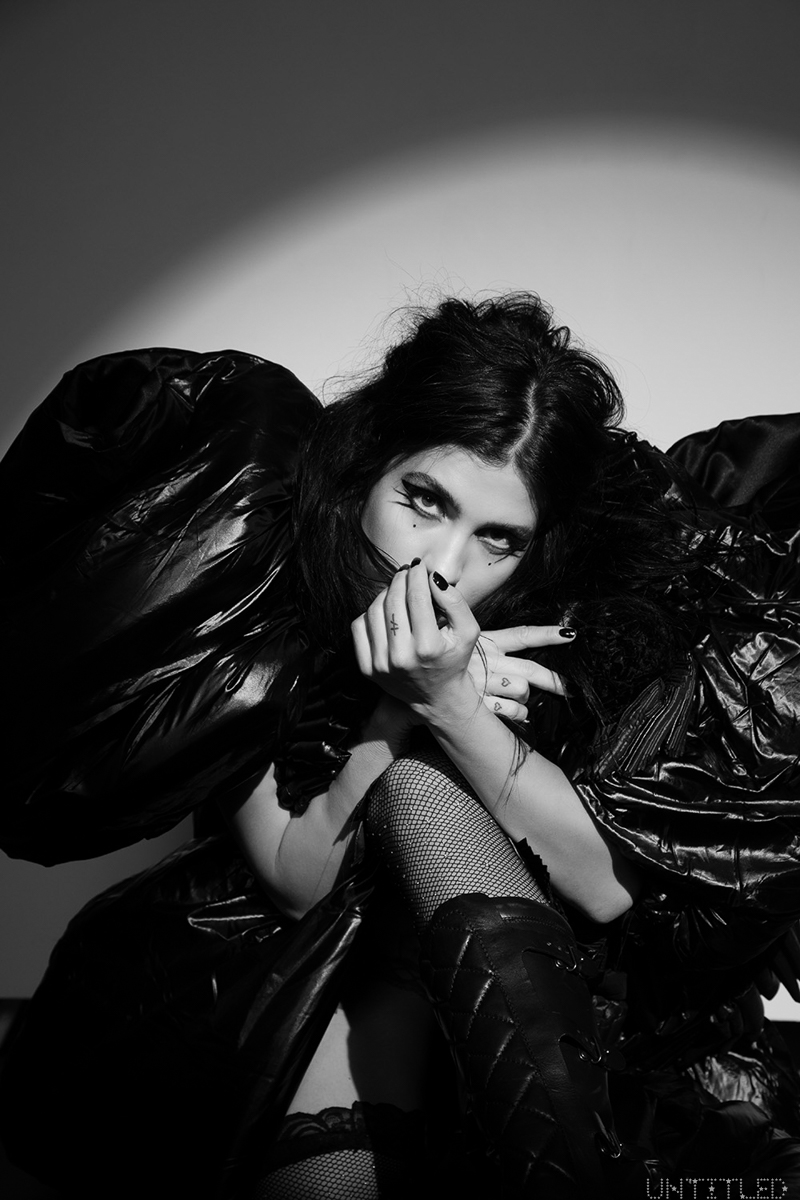
Your latest revolutionary project is the launch of UnicornDAO, which is focused on female and LGBTQ+ representation and driving equality in the art world. Tell me about your inspiration behind UnicornDAO and the people that the collective will be supporting?
The inspiration is that there are not enough women and LGBTQ+ people in this space. I feel like the culture is built by everyone, not just cis, hetero males, and they happen to represent 90% of the crypto scene. It’s not entirely their fault. Some of them actually want to change it. Some of them want to change it for idealistic purposes, and some of them just want to have fun! They realize that when they go to a party and it’s just men sucking their own dicks it’s not super fun! I personally found out over the last year that there are a lot of girls and nonbinary people who want to change the situation. There are a lot of male allies who want to change the situation. And so we just decided to create this infrastructure to allow people to participate. We basically just give them tools for how to change and shift the paradigm.
The reason why it has to be done quite quickly is because mass adoption of NFTs is right around the corner. I’m not a futurist, so I don’t really know when it’s going to happen, but you know, it might happen over the next few years. And it’s up to us to want to change the paradigm, and make the space more inclusive… or we can just say that it’s gonna stay the same as in the traditional financial industry or in the traditional art industry, which is still not equal at all. Pretty much all high-selling artists are still males, and it’s really difficult to change the traditional art world because it’s already so cemented. But this space is malleable; it’s young, it’s flexible. You can really change it through organizing.
That’s part of the reason why we built UnicornDAO and thrown in the same room the major players of the NFT space. And I believe in this particular network that has people like Beeple and Yuga Labs, who is literally the biggest NFT company up to date, and FlamingoDAO, who is the biggest collector now. It feels like if we can make this revolution happen, in the Web3 right now, for people who will come later; they’re going to take it for granted that this place is more equal than everything else that they saw before.
View this post on Instagram
I understand that female artists account for only 5% of all NFT art sales, which seems pretty shocking considering it is a young, new, malleable space. It absolutely needs to be disrupted now before it becomes too much of a thing since it’s still in early stages. How are you determining what artists to support through UnicornDAO – like your first purchase, Russian artist Olive Allen? How can artists can get their work in front of UnicornDAO?
People can send DMs, we’re open and we’re reading our DMs. Twitter would probably be the best channel of communication, but also Instagram. Crypto is mostly Twitter-oriented, so you can send us DMs there. You can send us replies on Twitter.
The way we decide? We have weekly calls as a DAO and everyone who’s a member or who is a curator at the DAO can join the call, and we just go through suggestions. We have an internal Discord – it’s not public, it’s only for members of the DAO – and this is the place where we vote for things we have by emoji consensus – meaning: are we going to buy the Olive Allen work? A. No. B. We’re going to spend up to 2ETH C. We’re going to spend up to 5ETH; and people vote by clicking options with emojis! That’s how we decide. And then on the call, if you feel strongly about a particular artist, you can talk about them. You can bring them on the call. You can bring it to the Discord and be like, “do you want to have a separate call with this artist?” And we’ve talked with a lot of artists just having one on one calls with them, hearing about their artistic journey, what they want to achieve.
For example: Matthew Stone. He’s a big artist in the traditional art space. He’s known for creating artwork for FKA Twigs. I’m also really stoked about Sputniko! who is a Japanese artist. She created something that’s called the “Menstruation Machine,” with which men can feel and actually experience cramps and pain that could be caused by menstruation.
I love that! So how does one become a member of UnicornDAO?
It’s only 99 seats, so it’s already a closed collective. There are creative ways how one can join, but we don’t have open membership at this point. Because we have to not just have membership, but also collect money in order to buy these artworks. We’re going to open up our membership, but you know, it’s just a fucking so-called “open-membership” because it’s buy-in. So if you’re just an artist, it’s unlikely that you would be willing to give 50ETH. But what is likely, is if you’re willing to participate in the DAO is to contribute your knowledge, your network, and be on DAO calls; you can join as a curator. And this was something that the DAO is going to decide collectively. So we have a number of traders right now who have vested equity, which means if they’re going to be active participants for X amount of months, then they’re going to have X amount of DAO tokens. So if you feel really strongly about participating in DAO’s work, then reach out to me, say on Twitter or on Instagram, and then we can take it from there.
But UnicornDAO is just the first step of the Unicorn roadmap. So what I’m working on personally right now is something that’s called UnicornX. Unicorn is the overarching brand for everything activist that we’re building in Web3. UnicornX is going to be more accessible. We are going to be making NFT drops, and you don’t have to have 50ETH in order to participate in that. I’m working on something that’s called UnicornRiot. It’s not a final name, UnicornRiot is just what I call it for now. It’s an activist arm of Unicorn where we’re planning to onboard a large amount of people; people who are interested in issues like reproductive justice. And we’re thinking about making these NFTs free, or almost free, in order to open the door for the largest amount of people to be able to participate. So we started small with really small networks of individuals to just build this platform for ourselves, but we’re planning to go really wide. And it’s not about having money. It’s about contributing what you can contribute. It’s ultimately about your passion and us having common goals.
So tell me about the “Pussyverse” and how that is fitting in with all of this?
We killed it.
Oh, you no longer have the Pussyverse?
No, not really. I call it the Unicorn now, it’s is just easier.
Okay! So basically the Unicorn has taken over the Pussyverse and is the new home for your Web3 utopia?
Exactly. So I used to call it “Pussyverse” but then I realized it’s more confusing for people to have different entities. So now we have just Unicorn. Now it’s just this overarching brand/movement and then it has different legs, like UnicornDAO, and UnicornX that’s going to be making drops, collaborating with artists, throwing real-life events, and parties, and producing educational materials… and there will be UnicornRiot.
Basically, our goal with UnicornRiot is to just provide tools for existing people’s movements to use for activism. So for example, we talked with some organizers from the Women’s March, and some folks from American prison reform about how they can use DAOs and NFTs for fundraising for their organizations.
Amazing. I heard you may be doing a collaboration with Christie’s. Is that happening?
It is happening! But I cannot really share any details right now. It’s still in process and might change its direction, but we are making a drop with Christie’s as Unicorn.
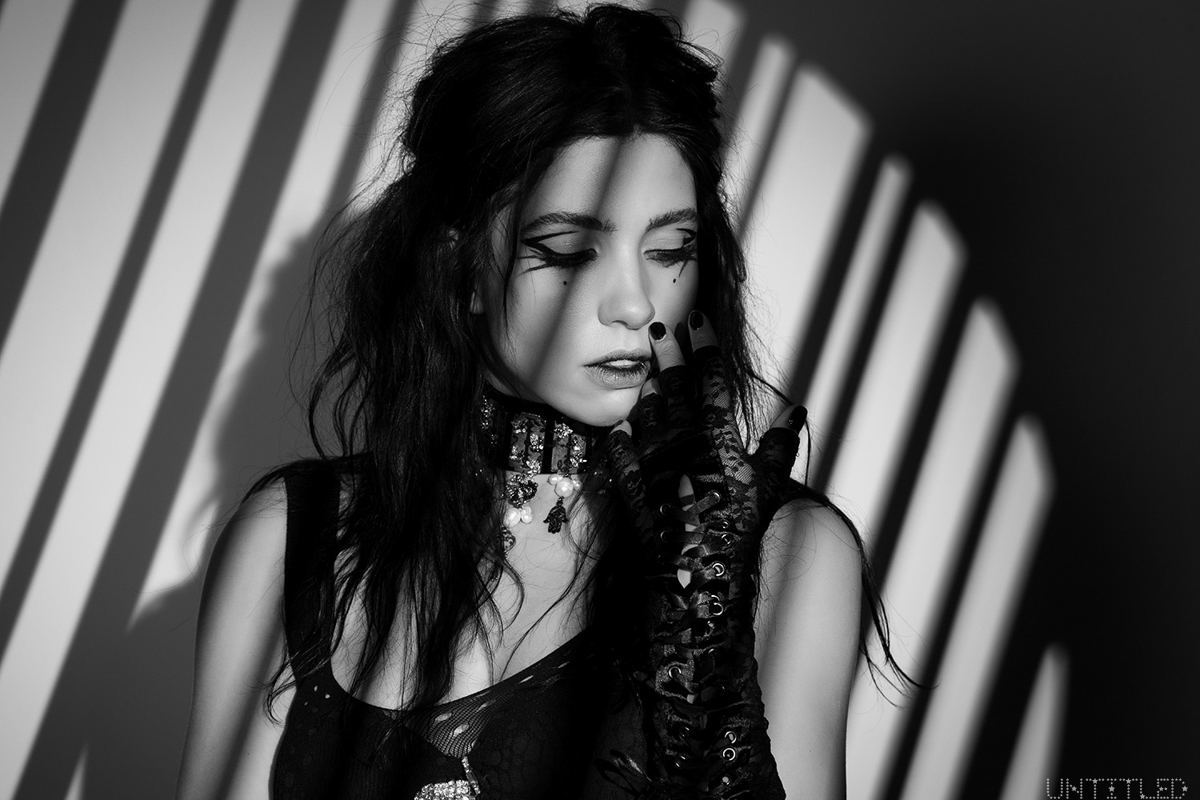
And you’re still very active as a musician. You just recently toured with Marina and the Diamonds and collaborated with Dorian Electra. I don’t know how you find time to do all this! Tell us about some of your own personal creative ventures at the moment with your music and touring?
I’m working on the treatment for a new music video right now. We’re going to be dropping an EP-ish type thing later this year. I’ve been working on tons of music. I’m actually really bad with releasing music, cause I like to create music and then I just never release approximately 85% of the music that I record. Maybe one day I’m going to drop everything that I recorded… it’s actually insane. But I’m forcing myself to actually get this out there sometime. I don’t want to promise any particular month, but sometime later this year I’m going to release a bunch of music.
I’m excited about the different collaborators I have had. I feel like I’m developing a lot as a songwriter. It’s just really exciting to me personally, because I’ve never identified as a musician, so it’s more like my personal art project. I mean, it’s still Pussy Riot, but between all the Pussy Riot members, I’m the one who is actually really obsessed with songwriting. And it’s just nice to see how my skills are getting better. I’m writing a lot on topics like all the usual suspects: female empowerment and police brutality, prison systems, reproductive rights, everything that we love [laughs].
I love the fact that you come up with such incredibly creative ways to empower this movement and really think outside the box and push the boundaries. You’re really a revolutionary. When you open the dictionary to the word “revolutionary” it should be a picture of you! You’re definitely the most creative activist I think I’ve ever personally encountered or heard of. I love the fact that you can take it on stage, on a tour, you can fight in prison, and you can take it on the blockchain. You’re doing every possible thing that you can to push your message! And I think that’s just incredible. I really appreciate your work!
Thank you so much!
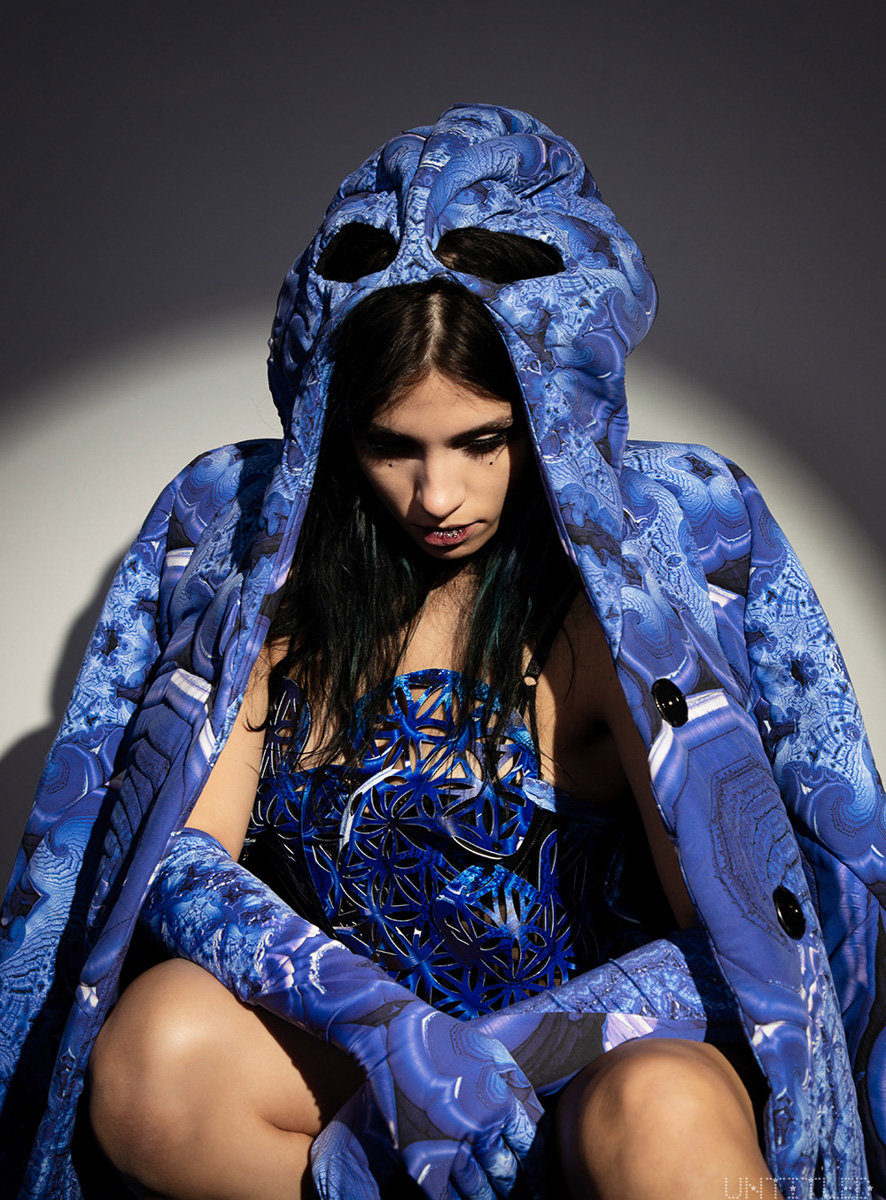
Photography and Interview by Indira Cesarine for The Untitled Magazine
Styling by Indira Cesarine
Hair and Makeup by Roberto Morelli
Fashion assistant Magali Zoanetti
Interview Copy Editor Jason Daniel Levy
For more on UnicornDAO follow on Twitter
Pussy Riot Instagram @nadyariot


